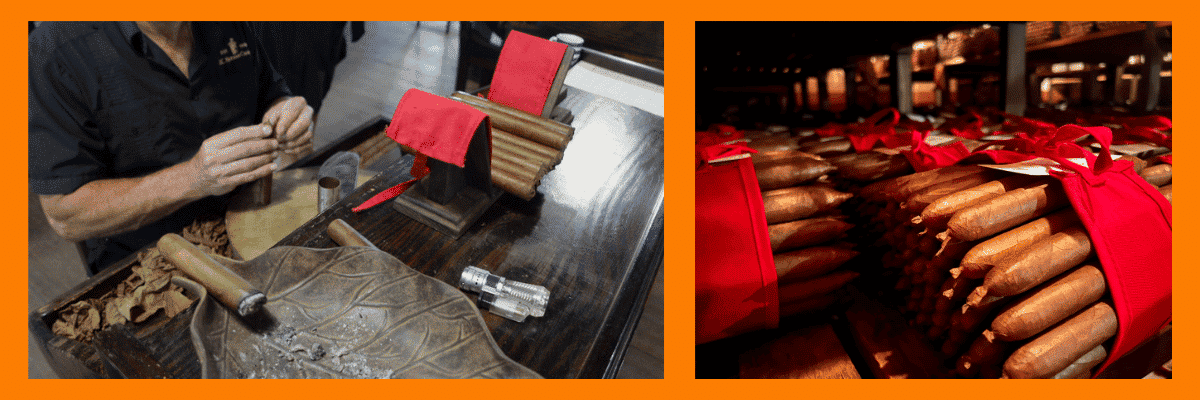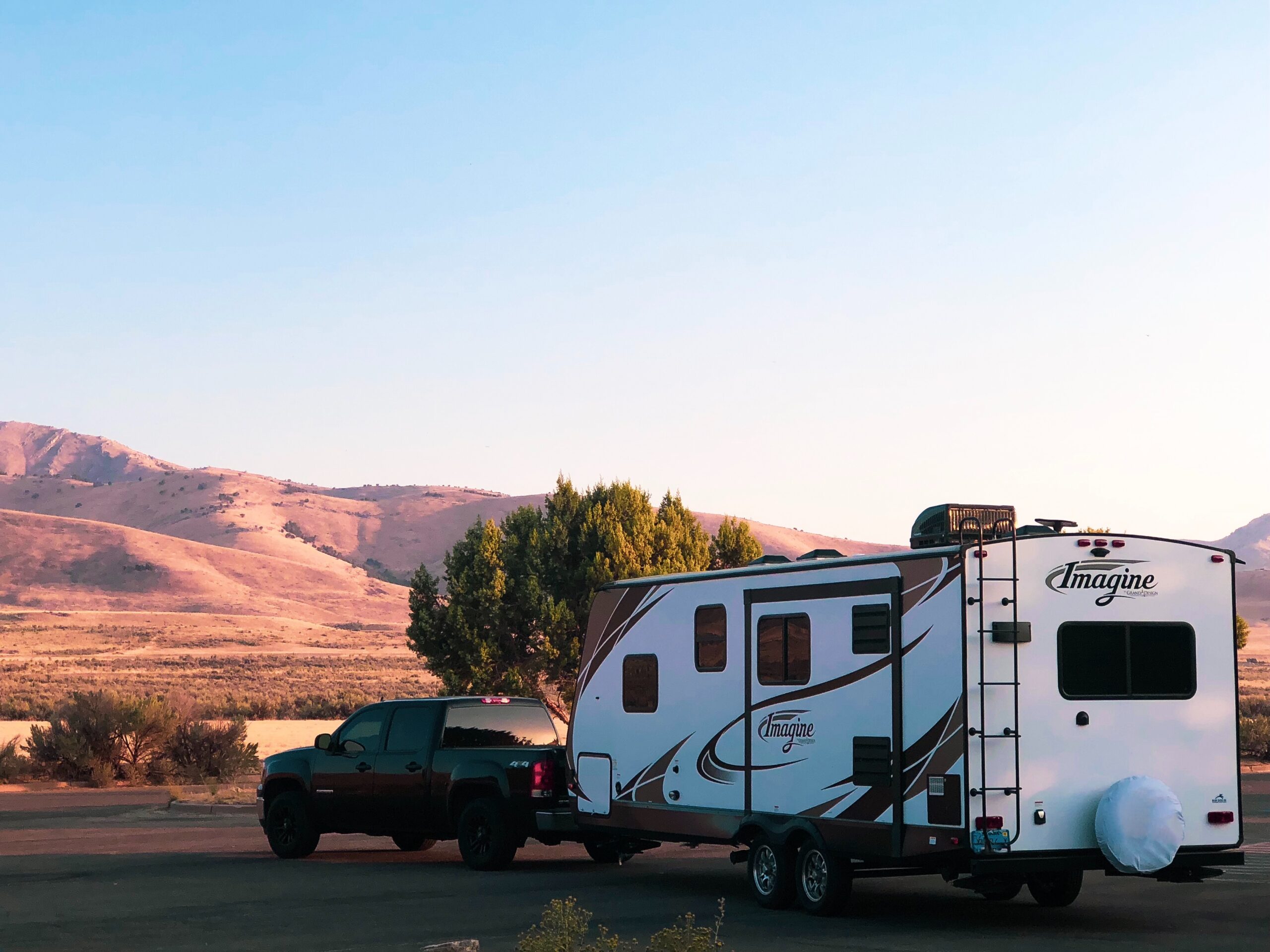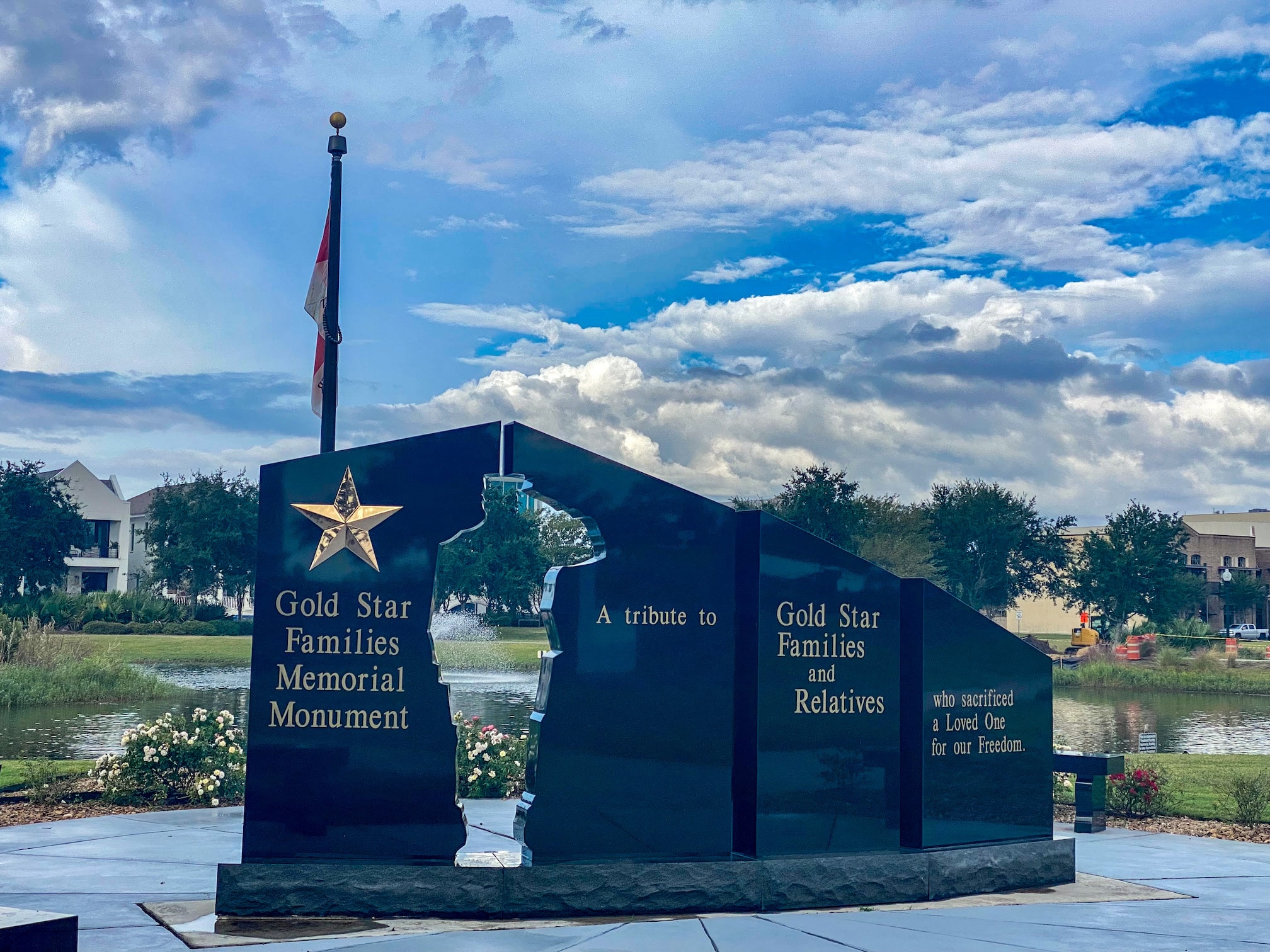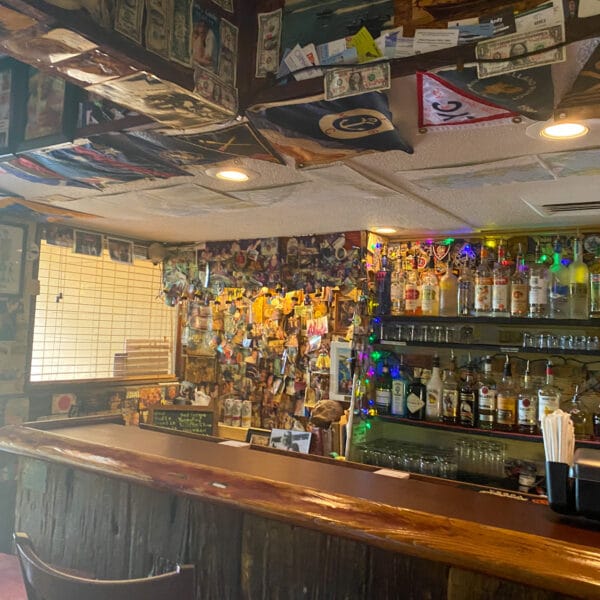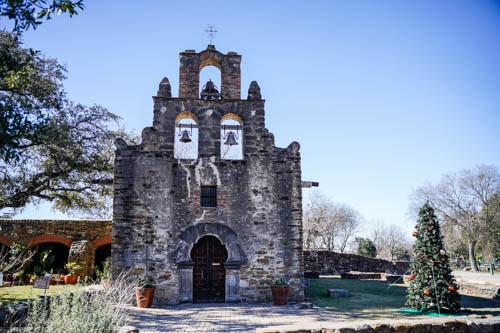The sweet aroma of tobacco floats through the streets. Along with fresh baked Cuban bread. Another distinct scent is the sweet fragrance of Cuban coffee. Or Cafe Cubano. Later, the rhythmic beats of Latin music will go late into the night. This is Ybor City! And it was once the Cigar Capital of the World!
Disclosure: Some links on our site are affiliate links. If you purchase a linked item, we will make a commission, at no extra charge to you.
Ybor City sits northeast of downtown Tampa. West Coast Florida’s only neighborhood designated a National Historic Landmark District. Its’ 7th Avenue was recognized as one of the “10 Great Streets in America”! And its’ namesake was Vicente Martinez Ybor.

Get to Know Florida’s Ybor City
- The Ybor Factory Building, built in 1886, was, at the time, the largest cigar factory in the world.
- Ybor City’s Columbia Restaurant is the oldest Spanish restaurant in the US.
- Centro Asturiano de Tampa has the world’s longest marble onyx bar.
- At one point, Ybor City made more cigars than anywhere else. About 500 million per year.
- J.C. Newman was the first to package cigars in cellophane tubes, to protect cigars and keep them fresh. This is now an industry standard.
- In 2001, the Newman and Fuente families created the Cigar Family Charitable Foundation. a 501(c)(3) non-profit organization that has raised over $3 million to build schools. They’ve also built medical clinics. Farms and sports and recreation facilities. All to help the poor children of the Dominican Republic.
- Once the embargo against Cuba began, J.C. Newman introduced Cameroon tobacco to the US.
- The Cuesta-Rey Cigar Bar at Tropicana Field was the first cigar bar in Major League Baseball. This is the home of the Tampa Rays.
Vicente Martinez Ybor moved from Valencia, Spain to Havana, Cuba at 14 years old. This was to avoid military conscription, as was mandatory for all male Spaniards, at the time. There, he first learned about the cigar business. After opening his own factory and selling his very popular brand, he was soon producing 20,000 cigars a day. Then came the Ten Year War, where Cubans fought against Spain for their independence. Martinez Ybor faced arrest for his part in assisting the Cuban rebels. Avoiding Spanish authorities, he fled to Key West, Florida. His business flourished in Key West. But there were conflicts between Spanish and Cuban workers. And the difficulty of getting to and from the island prompted him to again move his business.
Enter Tampa, Florida, and Martinez Ybor’s friend and city engineer, Gavino Gutierrez. Martinez Ybor and his business partners visited the city in September 1885. The low-priced land and hot, humid climate needed to keep tobacco workable were ideal. Transportation with Henry Plants’ new railway and steamships also made Tampa perfect. A $5000 subsidy from the Board of Trade also enticed him to buy 40 acres northeast of Tampa a month later, in October. The following spring, Martinez Ybor, and a friendly rival buy several adjoining parcels. They hire Gavino Gutierrez to plan and lay out a company town. This town is dubbed Ybor City.
By the middle of 1886, a large fire in Key West destroyed much of the town. This brought hundreds of Spanish and Cuban cigar workers to Ybor City. This began a period of steady growth that continued over the next few decades. To avoid the labor unrest he dealt with in Key West, Martinez Ybor provided good wages. He also improved living conditions. His company built “casitas”, or small houses, that workers could buy at cost. His hope was home ownership would keep employees from emigrating back and forth to Cuba. This was a common practice, at the time. He also established other businesses. Including a brewery, hotel, gas company, brick factory, and other ventures. He even built Tampa’s first streetcar line.
Martinez Ybor also encouraged other cigar manufacturers to open in Tampa. He welcomed others who set up businesses in the area. His plan worked and soon both his businesses and the city which bore his name, flourished. By the late 1880s, workers were hand-rolling and shipping tens of millions of cigars each year. At the turn of the century, this number increased to hundreds of millions. The cigar industry employed thousands of well-paid workers. In about 20 years, Tampa went from an economically depressed village to a bustling city. The prosperity of the cigar companies gave way to the city’s nickname, Cigar City.
About one thousand miles away, in a barn in Cleveland, Ohio, sits Hungarian immigrant J.C. Newman. Here he hand-rolls his cigars. This is how he starts what will become the oldest family-owned cigar factory in the United States. And the only factory still standing in what was once the Cigar Capital of the World!
Julius Caesar Newman came to the United States at 14 to escape military conscription. Much like Vicente Matinez Ybor. Born in a sleepy town in what is now Eastern Slovakia, his family emigrated to Cleveland in 1888. J.C.’s mother, Hannah, paid $3 a month for him to learn the cigar trade. After interning to learn how to make cigars, he opened his own company in his family’s barn. With a cigar table made from old boards and $50 to buy tobacco, he got his first order for 500 cigars. But competition was fierce. There were thousands of cigar manufacturers in the country at the time. 300 in Cleveland alone. But Newman found a way to make his business thrive. Through hard economic times and two World Wars, he continued to build his business. He also invested in the first cigar-making machines. The biggest threat to the cigar industry, at the time, came from cigarettes in the booming 20s. Their popularity left only two cigar makers in Cleveland. Newman and Grover Mendelsohn. These two companies ended up combining into M&N Cigar Manufacturers. Later, at the end of the 1930s, J.C. Newman bought out Mendelsohn to become the sole owner.
The company credits its survival during this time to switch to machine-made cigars. But later, bigger companies would take over the domestic tobacco market. This was to drive out smaller companies like Newman’s. He conferred with his family on what to do. They decided they needed to produce more expensive cigars. At the time, the only place doing this was Tampa’s Ybor City. Using cheaper Cuban tobacco and hand-rolling cigars, Newman would save his company. So, that’s exactly what he did. In 1953, at 78 years old, the Newman family moved their family-owned business to Ybor City.
But why use Cuban tobacco? And where does the belief that Cuban cigars are superior to any other? In a word…marketing! Cuban tobacco was cheaper than US-grown tobacco. One reason was that the bigger Midwest manufacturers could control the price. Doing so drove out smaller companies. So, J.C. Newman and the others in Ybor City purchased the cheaper Cuban tobacco for their cigars. But marketed them as superior to anything else. But the marketing was too good. In 1962, President Kennedy imposed a trade embargo on Cuba. The impact on the industry was severe. The belief was, “why would I smoke US-grown tobacco when Cuban tobacco is better?” As the industry recovered, it began using tobacco from Cameroon. They also use Nicaraguan, Dominican Republic, and domestic tobacco, too.
But there are more problems than where to get tobacco. Back in the day, Tampa had a mob problem. The Italian Mafia, Cuban mob, Jewish mob. And one of their favorite places to hit was the cigar factories. Workers were making between $20 and $25 a week. And each factory would have up to 1000 employees. The payroll is in cash, so you can imagine the large amounts on-premises. J.C. Newman, among others I’m sure, had a panic button and trap door in his office. If he was ever in danger all he had to do was press the button. He could head to the basement of the factory in secret, and to safety.
Also in the basement of the J.C. Newman factory is the supposed last legal bale of Cuban tobacco. Purchased in the late 50s, before the embargo. This bale now sits in their storeroom, never to be used. But they do use Cuban seed tobacco. Nicaraguan farmers grow tobacco from Cuban seeds for importation into the United States. Next to this storeroom is the aging room, where hand-rolled cigars will sit to age from 12 to 18 months.
Outside of this area, a solitary man is rehydrating leaves from the bundles. He does this by spraying them with distilled water. They sit here for a few days until they’re taken upstairs and rolled into cigars.
The second-floor houses all the machinery used in making cigars. From the machines used to roll them, to machines used to cut the center stem from the leaves. Long ago, they learned that the stem holds most of the nicotine, and removing it creates a smoother taste. The machine cuts the two halves of the leaf free from the stem. They are then separated into left and right halves for production. This is because half of the machines roll from left to right and the others from right to left. This ensures the most efficient use of the leaf. All along the ceiling are vents releasing humidity into the space. This keeps the tobacco moist during production. All J.C. Newman’s machine-rolled cigars use pre-aged tobacco left over from hand-rolling. These scraps are then mulched and used for these less expensive cigars.
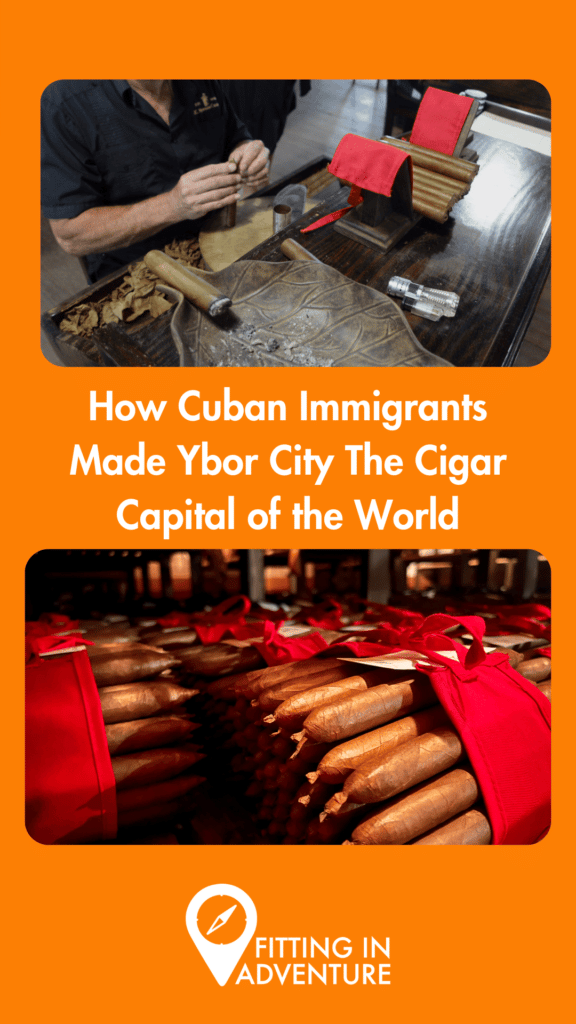
The third floor is where the magic happens. Those who’ve learned the trade in Cuba before immigrating to the United States sit at desks. Like people have for over a hundred years. There are some differences, to be sure. The numbers aren’t what they used to be. Both in workers and production. The stage where “El Lector” once sat is empty. This was a man paid by the workers to sit and read to them while they worked. Everything from books to newspapers and current events. Nowadays, everyone has earphones and listens to whatever from their phones. But the process is still the same. Using a recipe learned long ago, they will grab a wrapper leaf and fill it with filler and binder leaves. On the tobacco plant, leaves from the top of the stalk burn slower and have a sweeter taste. While leaves from the bottom have less taste but burn faster. The roller must know what ratio to combine these. The top leaves for a slow burn and flavor. And the bottom for fuel and to speed up the burning. The binder leaves help to fill it up without using too much of any one kind. A good cigar will combine these two attributes.
Atop the factory is the cupola. It once housed “El Reloj”, or the clock. This clock now rests in the entrance on the first floor. Generations of residents had woken and retired by the hourly chimes of El Reloj. Also, a large water tank held several hundred gallons for fire suppression. A century ago, a lookout would climb the narrow stairs to the cupola to look out to the port of Tampa to see if a ship had come in. This would mean the time had come to unload the lifeblood of the factory. Heavy bales of rich, Cuban tobacco.
A lot has changed since then. In 1895, there were 40,000 licensed cigar manufacturers in the US. Now, almost 130 years later, J.C. Newman stands as the only one still owned and operated by the founding family. From their humble beginnings in a barn in Cleveland on a homemade rolling table to now, J.C. Newman has prospered. They have survived the roaring twenty’s and the Great Depression. Two World Wars and the Cuban Embargo. Even excessive taxes and smoking bans. Through it all, they stuck with what J.C. started so many years ago. Quality, innovation, and some of the world’s finest hand-rolled cigars.
A Couple of Terms to Know Before You Blow Smoke
Anilla: The Cuban term for a cigar band. It means “ring” in Spanish. The Spanish, who have their own way of making cigars, call it a Vitola.
Chaveta: The semi-circular blade used to cut the leaf that forms the wrapper for the cigar.
Fortaleza: The strength of a cigar. Measured from 1 to 3 degrees corresponding to the terms “volado”, “seco”, and “ligero”.
Galera: Spanish for “galley”. The workshop where workers make cigars by hand.
Maduro: Spanish for “ripe”. It designates the dark reddish-brown, almost black, wrapper.
Puro: The Spanish term for a cigar.
Torcedor: A cigar roller. “Twister” in Spanish.
Tabaquero: The cigar store owner. This term often gets confused with Torcedor.
Totalmente A Mano: On cigar boxes, this means “completely made by hand”. You will also find on some, “Hecho a mano”, which can mean machines played some role in making it. And “envuelto a mano” means the cigars are packed by hand.
Try Your Hand Rolling Cigars
The JC Newman Cigar Company now offers hand-rolling classes. Recently, I took advantage of the opportunity to try my hand at it. No pun intended. I didn’t go into believing that cigar rolling was necessarily a hard task, but I knew it wasn’t altogether easy, either.
They provided us with five pre-rolled cigars that we then hand-rolled the tobacco leaf wrapper around. These pre-rolled cigars were the binder and filler tobacco that burns inside the finished product. The wrapper is rolled around these and gives the cigar that nice, finished look. It is one-half of a tobacco leaf tightly wound around the cigar and held it place with a “glue” made from cornstarch and water. In the old days, it was literally licked. Luckily, good food safety practices abolished this trend long ago and the cornstarch method was developed.
As I said before, it isn’t necessarily a hard task, but it is difficult to master. I can see why many cigar factories went to machine rolling. But I can also appreciate the pride these “Torcedor’s” have in what they do.
First, place the leaf in front of you with the bottom side facing up. You can tell this by the visible veins in the leaf. Next, using your “Chaveta”, trim a small portion from the top to give yourself a clean edge and a small arc in the bottom. Now, you’re on a roll! Starting at the foot (bottom), using one hand to stretch the leaf to keep wrinkles out, roll the cigar into the leaf at an angle. When you reach the head (top), use the cornstarch “glue” to adhere the wrapper to itself. Cut away any excess leaf with your “Chaveta”, leaving about two inches at the top. Next, apply the “glue” to this excess as you twist it a few times. This closes the top of the cigar. When you have the cigar closed, cut any excess off and use your fingers to shape the head to create a nice, round shape. Now, rub a little glue into a small spot on a spare piece of leaf to use as your cap. Use your “Chupi” (cigar cap cutter) to cut a small, round cap for the head. Smooth this over the head and remove any excess. Your last step is to use the Guillotine to cut the foot and give it a sharp edge. Now, all you have to do is wait. They told us to wait at least ten days for the tobacco to dry.
It was a fun experience and worth the time. In the future, they plan on having a rolling class for the cigar itself. Where we can pick both the filler and binder tobacco to be rolled into a cigar. They stated they will hold onto your unique blend for you. So, if you smoke yours and want to return and roll more, they have it on-hand.

